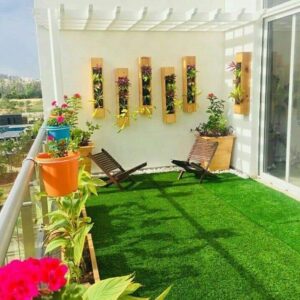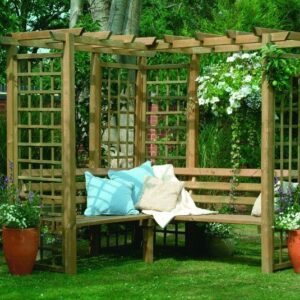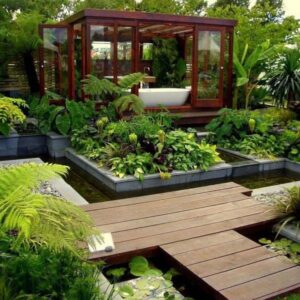Plants are not only beautiful additions to your home or garden, but in various cultures, they are also believed to bring positive energy, wealth, health, and love. The idea of plants bringing specific benefits is deeply rooted in ancient traditions like Feng Shui and Vastu Shastra, where certain plants are thought to possess the power to attract prosperity, improve well-being, and enhance relationships. Here are some plants that are considered symbols of wealth, health, and love:
1. Bamboo (Lucky Bamboo) – Symbol of Wealth and Prosperity
Bamboo, particularly “Lucky Bamboo” (Dracaena sanderiana), is one of the most popular plants associated with attracting wealth and good fortune.
- Symbolism: In Feng Shui, bamboo represents strength and resilience. It is believed that the plant helps to attract positive energy and can increase wealth and prosperity, especially when placed in the correct position in the home.
- Placement: Place bamboo in the wealth corner of your home or office, which is the far left corner from the entrance, to attract prosperity.
- Care: Lucky Bamboo is low-maintenance, requiring only indirect light and occasional watering.
2. Money Plant (Pothos) – Brings Wealth and Good Luck
The Money Plant (Pothos, Epipremnum aureum) is another well-known plant believed to attract wealth and good fortune.
- Symbolism: This plant is widely regarded as a symbol of wealth and prosperity. The trailing vines of the Money Plant are thought to attract good energy and financial success. Its round leaves are considered symbols of growth and abundance.
- Placement: Place the Money Plant near the entrance or in the southeast corner of your living room to promote wealth. It is also often placed in offices or businesses to bring success.
- Care: The Money Plant is easy to care for and thrives in low light. It requires watering when the soil is dry.
3. Jade Plant (Crassula ovata) – Attracts Wealth and Success
The Jade Plant is a popular succulent in many homes, particularly in Asian cultures where it is thought to bring good luck and financial success.
- Symbolism: Also known as the “Money Tree” or “Friendship Plant,” the jade plant’s rounded, coin-shaped leaves are associated with prosperity. It is believed that placing a Jade Plant in the right spot can help you attract wealth, health, and good fortune.
- Placement: Place the Jade Plant near the entrance or in the southeast corner of your home, known as the area for wealth in Feng Shui. It is also believed to be beneficial when kept in the office.
- Care: Jade plants thrive in bright light and need to be watered sparingly, as they are succulents.
4. Aloe Vera – Promotes Health and Healing
Aloe Vera is well-known for its health benefits, both as a natural remedy and a decorative plant.
- Symbolism: Aloe Vera is believed to promote health and healing. It is known for its ability to purify the air and boost the immune system. In Feng Shui, Aloe Vera is thought to protect the health of the inhabitants and absorb negative energy.
- Placement: Keep Aloe Vera in the kitchen or living room, as it’s thought to provide healing energy to the home and family. It’s especially good for promoting health when placed in the bedroom or bathroom.
- Care: Aloe Vera requires minimal care. It thrives in bright, indirect sunlight and should be watered sparingly, allowing the soil to dry out between waterings.
5. Rose – Symbol of Love and Romance
Roses are universally recognized as symbols of love and affection, making them the perfect plant to nurture relationships.
- Symbolism: Roses, especially red ones, are considered to attract love and romance. The sweet scent and vibrant colors are thought to bring emotional healing, strengthen bonds, and enhance relationships.
- Placement: In Feng Shui, placing roses in the relationship corner (the far-right corner of your home or bedroom) is believed to promote harmony, love, and positive energy in relationships.
- Care: Roses require plenty of sunlight, regular watering, and occasional pruning to maintain their health.
6. Lavender – Promotes Health, Relaxation, and Love
Lavender is well-known for its soothing fragrance and ability to promote relaxation and calmness.
- Symbolism: Lavender is often associated with peace, healing, and love. The calming scent of lavender is thought to reduce stress, improve sleep quality, and attract peaceful, loving energy to your home.
- Placement: Place lavender in areas where you want to create a tranquil, loving atmosphere. The bedroom or living room are ideal places to keep lavender plants to promote love and relaxation.
- Care: Lavender prefers full sunlight and well-drained soil. It is drought-tolerant and needs minimal watering once established.
7. Orchids – Symbol of Love and Beauty
Orchids are beautiful, elegant flowers that are believed to attract love, beauty, and fertility.
- Symbolism: In many cultures, orchids are symbols of love, beauty, and strength. Their delicate, exotic flowers are thought to bring positive energy to relationships and are often associated with romantic love and fertility.
- Placement: Orchids should be placed in the relationship corner of the home to enhance love and strengthen bonds. You can also keep them in the living room to add beauty and positive energy.
- Care: Orchids require bright, indirect light, and they need to be watered regularly but not overwatered. They thrive in well-draining pots with good humidity.
8. Tulsi (Holy Basil) – Brings Health and Spiritual Upliftment
Tulsi, or Holy Basil, is revered in Hinduism and many other cultures for its spiritual and medicinal properties.
- Symbolism: Tulsi is regarded as the “queen of herbs” and is thought to bring health, wealth, and spiritual growth. It is believed that growing Tulsi in your home brings a sense of peace, purity, and well-being. In Vastu Shastra, it’s considered a sacred plant that can promote family harmony and attract divine blessings.
- Placement: Keep Tulsi plants in the northeast corner of your home or near windows to attract positive energy and health.
- Care: Tulsi requires plenty of sunlight and needs to be watered regularly to keep the soil moist.
9. Gardenia – Promotes Love and Harmonious Relationships
Gardenias are aromatic, white flowers that symbolize love and purity, often associated with attracting positive and loving energy.
- Symbolism: Gardenias are thought to enhance love, beauty, and harmony in relationships. The strong, sweet fragrance of gardenias is believed to foster emotional connections and positive energy, especially in romantic relationships.
- Placement: Gardenias are best placed in bedrooms or living rooms, as their scent is said to promote love, peace, and joy.
- Care: Gardenias need bright, indirect sunlight and high humidity. Water regularly, ensuring that the soil remains moist but not waterlogged.
10. Spider Plant – Symbol of Health and Vitality
Spider plants are hardy houseplants that purify the air and are associated with health and vitality.
- Symbolism: The Spider Plant (Chlorophytum comosum) is thought to promote health and vitality. In Feng Shui, it is believed to help clear out negative energy and promote a healthy environment.
- Placement: Spider plants thrive in various indoor spaces, including the living room and kitchen, as they help purify the air and promote overall health.
- Care: These plants are low-maintenance and thrive in indirect light with regular watering.
Conclusion
By incorporating these plants into your home, you can potentially enhance various aspects of your life, including wealth, health, and love. Whether you’re seeking prosperity, emotional harmony, or physical well-being, the right plant in the right place can bring positive energy and change to your home environment. Remember to give each plant the proper care it needs to thrive, and watch as they transform your space into a sanctuary of positive energy!






